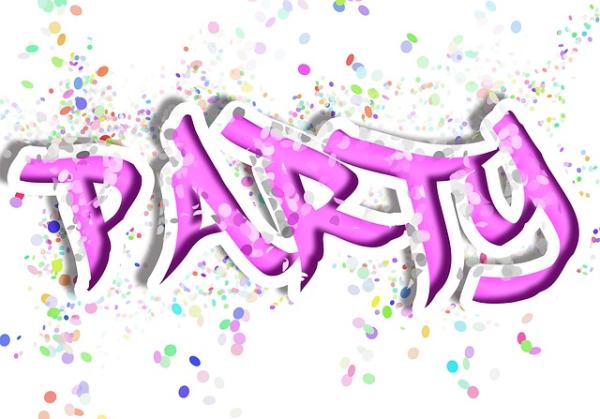The story of the pivotal moments in our lives often follow one of two narratives, the result of intentional, focused hard work, or the serendipitous encounter, being at the “right place at the right time,” when an opportunity appears. Of course, our lives are often a combination of the two. A recent paper sought to identify social moments that facilitate serendipity, and can “unexpectedly shift the trajectory of individual lives” – their answer was parties.
Social events, are a general term applied to our human interactions with a prescribed structure, shared focus and engagement among “like-minded” individuals. For example, a doctor visit has an examination and discussion, the socially relevant participants, all focused on the patient’s well-being. The ways parties differ from that scenario helps explain the beginning of serendipitous changes in our bonds, habits, thoughts and plans.
The study is qualitative, the distillation and characterization of life-changing moments gathered through the author’s field notes on parties they attended, journals kept by college students, with “the event-rich lives” of those 18-22 and away from home, as well as retrospective reviews of memoirs and autobiography. There are no p-values or charts, just an explorational observational study. The authored identified five qualities of parties influencing the appearance of serendipity in our lives.
Parties create a special world.
Parties, unlike after-work drinks, or seeing your dentist, are separate from our day-to-day interactions. Their specialness is often enhanced by celebrations of transitions, e.g. quinceañera, bridal or baby showers, retirements. The specialness allows the rules of social distances and behaviors to relax while simultaneously creating new guidelines, obligating participants to honor the occasion. Think of the time spent in deciding on the “best” outfit or the right time to arrive and depart.
Building collective energy and effervescence
Bringing together people with a shared focus of attention creates a sense of union, often characterized as “the energy” in the room. You can tell it is a rockin’ party just from the volume.
Gathering dispersed people together
Parties allow people normally separated to come together. Participants may be separated by geographies or schedules and often represent differing facets of the host’s life, their childhood, school, work, and gym friends for example. Network theory would describe party goers as having strong connections to the host and weak or weaker connections with one another.
Those weak connections are very important and other studies, that do involve p-values, have shown and suggested that those weak connections explain why “good apartments,” at least in NYC, never make it into the ads; there is always someone who knows someone who has a friend. Same is often true for jobs. The interaction of weakly linked people is a great source of opportunity, the product of chance not hard work.
Requiring participants to publicly rank relationships
Parties require choices, initially who is invited or given special roles, just think of the planning that goes into creating a bridal party. Or how often to you silently assess your relationship to the host by the seating arrangement? (Why am I always with the out of town relatives and so close to the kitchen.) Other rankings need no seating chart, who you choose to spend time with, how engaged or distractable you are, all are ways our “monkey” brain assess rank.
Demanding complex choreography in the public view and judgment
Let’s face it, while it may be unconscious, interacting with people involves a lot of work; the dance of managing your participation, disciplining what you say (especially in the last few years), being appropriately engaged, knowing when it is your turn to carry the conversation or not. Parties amplify that choreography extending to not only who you greet but what you say. Painful as it may be, reflect for a moment on those high school dances if you want to see complex choreographed behavior.
Parties in perspective
Parties seem to facilitate moments of change, for good as well as bad; strangers become friends, friends become lovers, slights turn to rifts and arguments can breech friendships. Social scientists seeking to understand individual life paths, how can two “identical” people wind up in very different circumstances. Of course, they is unobserved heterogenicity - unrecognized differences that make “identical” people different from one another. But parties seem to stand apart and make our life trajectories more of a crapshoot, where “contingent events,” chance encounters are at work. Some contingent moments happen with great regularity and may help explain the institutional gender and racial differences in our lives. But parties occur less regularly, and stir the social pot in the same way random mutations stir the gene pool.
“Differently put, our trajectories through life vary in ways that cannot be fully explained by the characteristics of people because each one of us is subject to fateful situations: forms of experience that pull us out of our routines and open us to bursts of change going in many directions. The social occasion is one such form of experience and as such, merits attention by anyone interested in better explaining our stunningly varied life paths.”
Source: Go to More Parties? Social Occasions as Home to Unexpected Turning Points in Life Trajectories Social Psychology Quarterly DOI: 10.1177/0190272518812010




